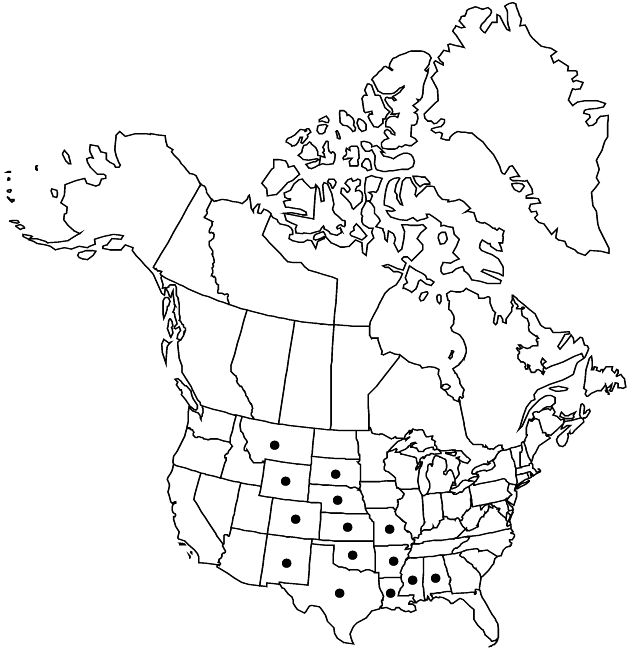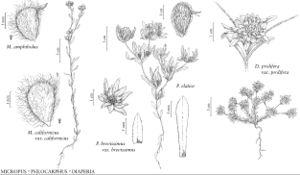Diaperia prolifera var. prolifera
Plants mostly grayish green, 3–15 cm, loosely lanuginose. Stems mostly 2–10; branches ± equal, distal mostly spreading to ascending. Leaves: largest 9–15 × 2–4 mm; capitular leaves usually ± spreading, scarcely involucral, not or scarcely carinate, pliant to somewhat rigid. Heads 4–40+ in largest glomerules. Receptacles broadly conic, 0.4–0.6 mm, heights mostly 0.5–0.7 times diams. Pistillate paleae: longest 3.3–4 mm.
Phenology: Flowering and fruiting (Apr–)May–Jun(–Sep).
Habitat: Dry, open, often disturbed silty to clay soils, barren to grassy, brushy, or wooded slopes, plains, prairies, toward s and e usually over carbonate (limestone, chalk)
Elevation: 90–1500(–2200) m
Distribution

Ala., Ark., Colo., Kans., La., Miss., Mo., Mont., Nebr., N.Mex., Okla., S.Dak., Tex., Wyo.
Discussion
Variety prolifera occupies a broad crescent from western South Dakota and southeastern Montana to northeastern New Mexico, central and eastern Texas (nearly to Mexico), southern Missouri, and southwestern Arkansas, with outliers in chalk prairies of southern Mississippi and southern Alabama. A specimen of it (mixed with other Californian Filagininae) collected in 1903 is purportedly from southern California; it might represent an introduction that did not persist or an accidental admixture from another collection.
Selected References
None.
